![Freak Like Me: Understanding The Queerness Of The X-Men [Mutant & Proud Part III]](http://townsquare.media/site/622/files/2014/06/beast-is-not-gay.png?w=980&q=75)
Freak Like Me: Understanding The Queerness Of The X-Men [Mutant & Proud Part III]
The X-Men did not have an openly LGBT team-member for almost their first forty years of publication. This was primarily an egregious act of self-censorship on Marvel's part, but it may actually have helped strengthen mutants as a queer metaphor. Where LGBT people couldn't be part of the X-Men's text, the experiences of LGBT people came to dominate the X-Men's subtext.
In the third of three essays examining the parallels between fictional mutants and real life LGBT people, I'll look at how the mutations themselves -- and the identity struggles of many X-Men characters -- served to underline the essential queerness of mutants.
Superhuman mutation in the Marvel Universe is intimately tied to sexual awakening. Mutations usually manifest at puberty, when a person begins to develop a new sense of their body, their desires, their self. Through mutation in the Marvel Universe, and through emergent adolescent sexuality in the real world, we begin to discover who we are going to be. Sometimes that discovery isn't easy.
"Coming to terms" is the perhaps unfortunate term that we use to describe the process of recognizing and accepting parts of our lives that we have little or no power to change. It sounds as if we're negotiating a surrender, when we're really coming into our power.
Many X-Men stories have been about such struggles for self-acceptance. Nightcrawler learning to love his demonic appearance; Rogue trying to cope with the isolation of her life-draining touch; Iceman slowly embracing the wild extent of his cryopathic powers. The entire "Dark Phoenix Saga" is really the story of an identity crisis sparked by an awakening, and the teenage version of Jean Grey is now going through an awakening of her own.
Read through an LGBT lens, X-Men are all survivors of their struggles with identity -- and it's usually their post-adolescent identity. They've all found strength in their differences. They've all found pride in their otherness.
The original X-Men weren't especially "other". Angel's beautiful white wings made him different, but when he folded them away they only ruined the line of his expensive suits. Iceman wasn't originally able to turn himself into ice; he could only coat his body in ice or snow. Even Beast's transformation into a blue furball happened outside the X-Men comics. He quickly went superhero legit and joined the Avengers. He did struggle with his new identity, however -- and in returning to the X-Men proper, he learned to delight in his status as a weird living science experiment.
Nightcrawler was the first really freaky X-Man, a "monster" with a wicked appearance that belied his good soul. Though Nightcrawler's devilish design wasn't intended as a direct response to Angel's beatific appearance -- Nightcrawler was a recycled Dave Cockrum design from an abandoned project -- he serves as a powerful counterpoint, and helped usher in the new era of mutant queerness.
The characters introduced and re-introduced in Len Wein and Dave Cockrum's Giant Size X-Men #1 offered radical identities and radical bodies. An indigo tail, cat's eyes, metal claws, and steel skin. In these new character designs there was a punkish evolution from the milquetoast first class, and a rebellious rejection of conformity. To read an X-Men comic after 1975 was to read about empowerment through otherness.
In Chris Claremont this otherness found an able steward. He introduced Kitty Pryde, a shy adolescent with the power to retreat, and made her defiant. He introduced Rogue, a teenage girl so terrified of intimacy that she was angry at the world, and found her center. He introduced Rachel, a victim of abuse, and explored what it meant for a person to be trapped in that cycle.
Ideas of self-ownership occur again and again in Claremont's stories and characters. Emma Frost is a woman who truly owns her sexuality. The villain Mystique has a fluid identity that in no way compromises her certainty of self. And Dazzler is mutantdom's first drag performer, using stage theatrics to present her true self to the world. On the stage she could embrace her mutant identity in a way that wouldn't feel safe on the street.
Storm transformation from elemental goddess to mohawk leather punk is one of the queerest stories ever told in comics, because it's a story about liberating oneself from other people's expectations and finding a greater strength through letting go (thirty years before Elsa). Though the character's bisexuality has never been more than hinted at, it's clear that Storm's relationship with the female ronin Yukio was the trigger for her awakening. (Activist and educator J. Skyler has written eloquently about Storm's status as an LGBT icon, especially for LGBT people of color.)
Then there's Psylocke. This one is complicated. The racial and imperialist implications of Betsy Braddock's transformation from white Englishwoman to Asian ninja are incredibly unfortunate. I think that reading of the story inevitably overshadows a more positive one. Before her transformation, Betsy was unhappy with the body she was born in -- a body that left her vulnerable to Captain Briton, Slaymaster, Mojo, Sabertooth and others.
The best illustration of Betsy's unhappiness came in Uncanny X-Men Annual #11, in which the X-Men were each lured away by illusions that revealed their heart's desire. Storm's desire, interestingly, was to be with Yukio:
Storm resisted the illusion out of a sense of responsibility to her team. Psylocke succumbed to her desire in order to better help her team. Her desire was to be transformed into a steely new body.
(Betsy simultaneously rejected a place in her brother Brian's fantasy of suburban heteronormativity with his lover Meggan.)
The following year, Psylocke started wearing armor that simulated the body she knew she wanted. The year after that, she was actually transformed by Spiral and the Hand, given a tough new body that would allow her to throw herself into fights and go toe-to-toe with her opponents without any armor. Post-transformation, Psylocke was finally herself. She's a character who underwent a successful transition to a true identity.
Psylocke is not a transgender character -- her transformation had nothing to do with gender -- but like Nightcrawler she is a powerful example of a character embracing a non-conforming identity, and like Storm or Beast, she shows the strength that can come from reinvention. Even despite the awful racial implications of her story, I think Psylocke's new identity should be accepted as truly hers.
Many of the X-Men's queerest characters are women. I've written before about Chris Claremont's reinvention of female superheroes. Given the ways male characters have always dominated superhero fiction, the X-Men's gender balance is in itself a queer subversion of a masculine paradigm.
That's not intended to take anything away from the feminist reading of these heroes. Women's issues and LGBT issues are intimately aligned, because both present opposition to the notion of straight cis male supremacy. Women represent a challenge to conformity, which is why female heroes and icons tend to be more important than male heroes in all corners of the LGBT community.
The X-Men include many of the best female heroes in comics. Characters like Storm, Emma Frost, Rogue, Kitty Pryde, and Mystique, frequently shatter old-fashioned ideas about sex and gender through their strength, independence, leadership, and self-possession.
Mystique is as close as the X-Men have managed to get to a transgender character, in that she is gender-fluid. At one point Claremont famously planned to make her Nightcrawler's father rather than his mother. J. Skyler again has interesting things to say about her affinity to Mystique, but she acknowledges the difficulty in identifying with a villain, and says that the character is more representative of gender non-conformity than of trans identity.
This is where we reach the limits of metaphor. There has never been a conventionally transgender hero in the X-Men -- or in any truly mainstream superhero story. Genderqueer characters in comics are always aliens, mutants, or sorcerers, and while their stories can offer an enjoyable fantasy for trans readers, these readers deserve to see themselves represented by inclusion, not by metaphor.
I'd like to see Marvel bring back Emma Frost's long-absent brother Christian as a trans woman. Christian didn't have mutant powers as a man, but it would be apposite if she discovered her power as a woman. However it happens, a transgender hero is overdue in both the Marvel and DC universes -- and we shouldn't only see such a hero in the X-Men, but we should especially see one in the X-Men, where messages of inclusion, respect, and non-conformity, have been central to the narrative for decades.
The lengthy delay in introducing a trans X-Man is at least in keeping with the near-forty years it took for Northstar to join the ranks as the first explicitly gay X-Man. Psylocke was recently established as bisexual, so she joins Northstar and Mystique in the X-Men's queer ranks, alongside Karma, Stacy-X, Rictor, Shatterstar, Daken, and Doop (yes, Doop), and current and former students Anole, Graymalkin, Bling, Prodigy, and Benjamin Deeds.
Those ranks should continue to swell, and not just with the addition of new characters. Several established characters are well positioned to embrace previously unstated LGBT identities. Colossus, Beast, and Wolverine are all gay in other realities. Fantomex and Multiple Man both have LGBT alternate selves. Storm, Gambit, Deadpool and Iceman have all been subject to enough speculation that their coming out would not be a surprise. These characters don't all have to come out, but a few of them certainly should. Some readers find that sort of character revision exasperating, but those people may be reading the wrong comics. If the X-Men can't stand for change, pride, and diversity, what do they stand for?
It's true, of course, that Marvel's mutants have never needed to be explicitly LGBT in order to appeal to an LGBT audience. Yet the inclusion of explicitly LGBT characters does nothing to dilute the queer resonance of the characters -- and it perhaps rewards an audience that has loved the X-Men for generations.
We want to see ourselves in comics. We want to celebrate freaks like us.
More From ComicsAlliance
![The Case for Superman’s Transgender Pal, Jenny Olsen [Pride Week]](http://townsquare.media/site/622/files/2016/06/jenny-olsen.png?w=980&q=75)
![The Case For A Trans Captain America [Pride Week]](http://townsquare.media/site/622/files/2016/06/PrideWeek-Trans-CapAmerica.jpg?w=980&q=75)







